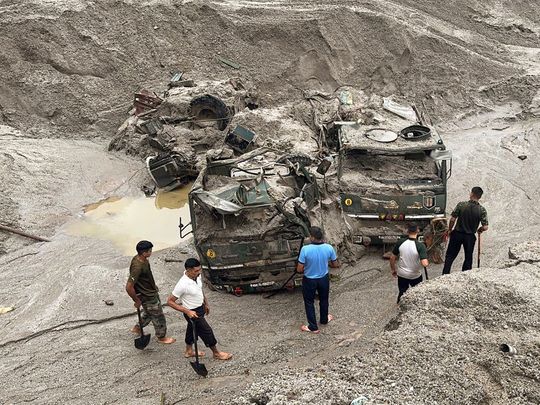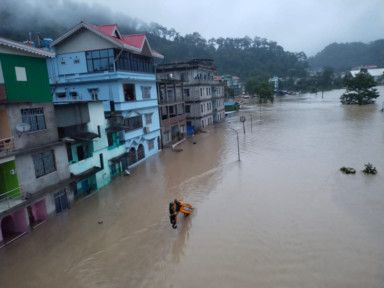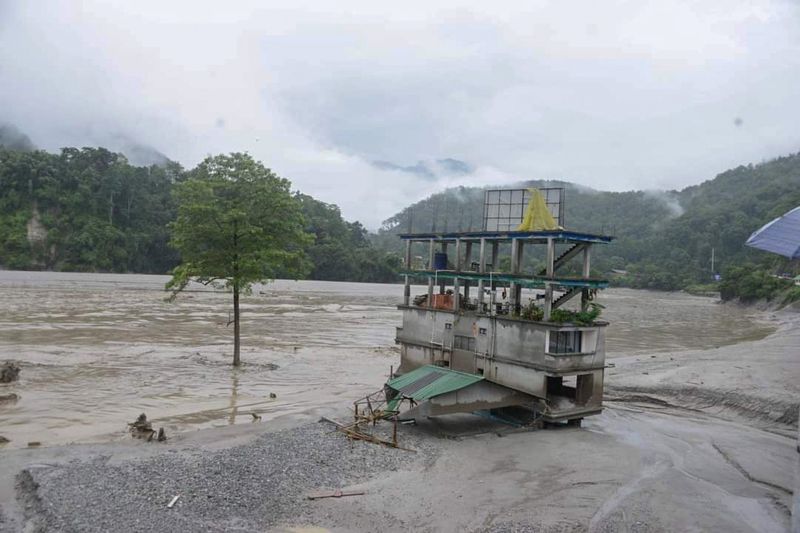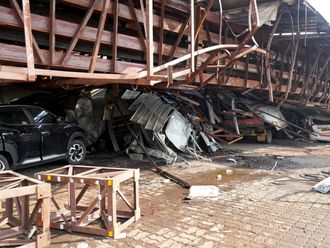
New Delhi: A Himalayan glacial lake in India probably burst its banks this week after chunks of ice fell into it in an apparent avalanche following heavy rains, triggering deadly flash floods in a small mountain state, experts told Reuters.
At least 18 people have died and nearly 100 remain missing as heavy rains and water gushing out of Lhonak Lake unleashed flash floods on Wednesday in the Teesta river in Sikkim state, which borders Nepal, Bhutan and China.
It is the latest in a series of extreme weather events that have caused widespread damage in the Himalayas of South Asia in recent years and have been blamed by scientists and officials on climate change.
WHAT CAUSED THE FLOODING?
The primary reason for the destruction in Sikkim was excess rainfall and a glacial lake outburst flood (GLOF) in Lhonak Lake at an altitude of 5,200 metres (17,060 ft), India’s National Disaster Management Authority said.

Glacial lakes are formed when a glacier melts and fills the depression left behind. There are 503 glacial lakes in the Indian Himalayas that are larger than 10 hectares - close to the size of 10 rugby fields put together, according to a 2011 assessment by India’s Central Water Commission.
Satellite images released by India’s space agency on Thursday showed that Lhonak Lake more than halved in size after it flooded.
The images also show a lot of ice floating on the lake surface, said Jakob F. Steiner, a fellow at the Kathmandu-based International Centre for Integrated Mountain Development (ICIMOD), part of the Himalayan University Consortium.
“On the south of the Lhonak Lake there are steep slopes, glaciers as well, there is still snow. It could be that a chunk of either ice or unstable slopes has detached and dropped into the lake water,” Steiner said, adding that the images indicate something like this happened.
This can create shockwaves across the water surface that would be enough to topple the lake’s dam, Steiner added, since the lake is up to 120 metres (395 ft) deep.

Finu Shrestha, a remote sensing and geo-information analyst at ICIMOD, said a combination of factors including rainfall, a snow avalanche and increasing pressure on the lake due to its growing size could have caused it to flood.
Sharad Chandra, director of the flood forecasting division at India’s Central Water Commission, said two earthquakes that struck Nepal on Tuesday, of magnitudes 6.3 and 5.3, could also be one of the probable reasons behind the GLOF event.
WERE THERE WARNINGS AND SIMILAR EVENTS IN THE PAST?
Indian scientists at the National Remote Sensing Centre had said in a 2013 report that there was a 42% chance of Lhonak Lake bursting its banks.
It said the lake had grown in size, from 17.54 hectares (43.34 acres) in 1977 to 98.73 hectares (243.97 acres) in 2008.
Latest satellite imagery showed the lake area as approximately 162.7 hectares before it burst and shrank to 60.30 hectares.
Deadly flash floods have previously been triggered multiple times due to GLOF events in the Himalayas, including a 2013 disaster in Kedarnath in Uttarakhand state that killed about 5,000 people.
Floods caused by days of heavy rains in Sikkim in 1968 killed an estimated 1,000 people.










